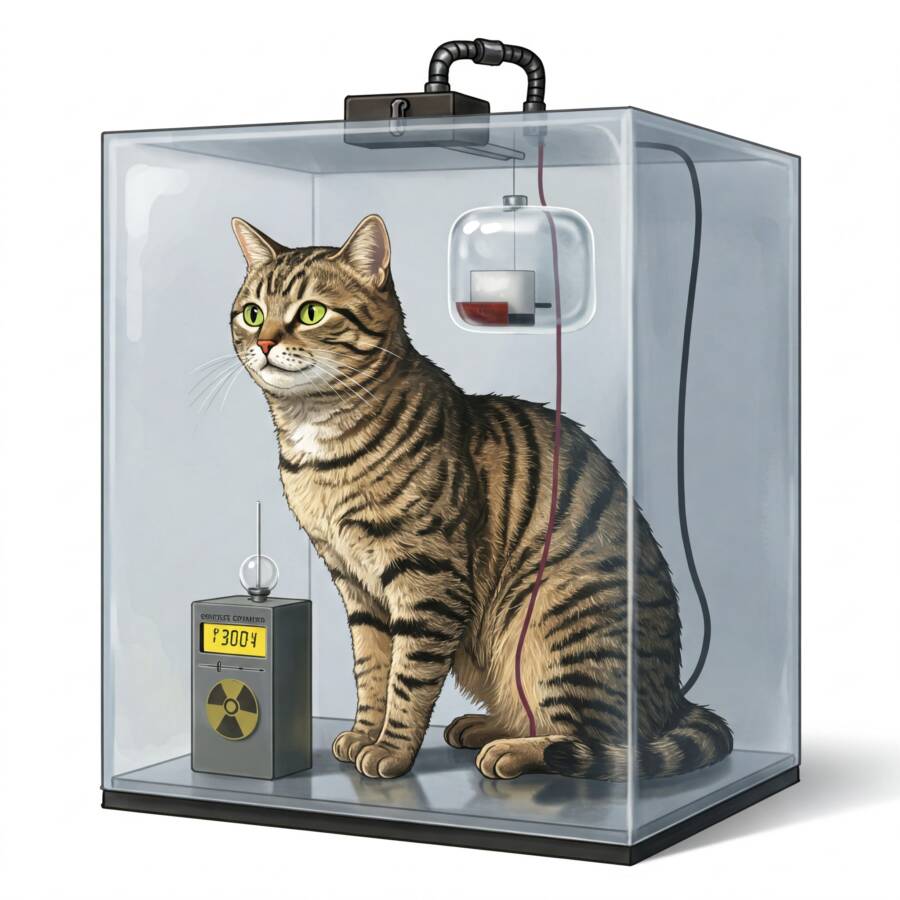If we look at all the available statistics, we can easily see that over the past 100 years, the human lifespan has increased dramatically. But even with this, there are many theories about immortality circulating. People used to live 45–50 years, and now the median lifespan in the US is 73 years. This is a huge difference, but people are people, and one of the most significant scientific dilemmas is this: can we ever become immortals?
Vaccines and other medications helped us eradicate various diseases that were a real threat to us, such as smallpox. But if we put illnesses and accidents aside, the real question that remains is: can we do something to become immortal?
If we want to know more about this, we can start by analyzing the theories about immortality that are out there and seeing what science thinks about them. Read on and find out all about them!

1. Can blood transfusions extend the lives of humans?
Of all the theories about immortality, the ones regarding blood transfusions are probably the most popular. And it is easy to see why. In popular culture, the blood is seen as the one that is carrying life through our veins, and this is not far from the truth.
And as you’d expect, research has led to some studies about blood and how we can live longer lives. Blood transfusions were the go-to approach, and some tests have been made on mice. A protein known as GDF11 has been shown to be uncommon in older mice’s blood, in contrast to how frequently it is seen in the blood of young mice.
It has been demonstrated that this protein increases skeletal muscle and cardiac strength. If we manage to combine regenerative blood transfusions with what we know about blood synthesizing, this could be the next thing that will help us extend our lifespan by 10–20 years.
2. Can suspended animation make us live forever?
Firstly, you might wonder what suspended animation is, right? There are a lot of theories about immortality, and the one regarding the concept of suspended animation is truly interesting. What it means is that, basically, we will be able to put life on hold. This is one of the oldest medical dreams, and there is a chance we will achieve it in the future.
Emergency preservation and resuscitation, or EPR, is the chosen word in science for the process, and the doctors from UPMC Presbyterian Hospital in Pittsburgh, Pennsylvania, are already in trials working to find out if there are practical applications for EPR.
The doctors at the University of Arizona in Tucson started to research suspended animation after the military asked them if there was a way to keep the wounded victims alive until they reached the hospital. They managed to find some sort of technique by doing trials on pigs.
Here is how doctors imagine suspended animation will work: Firstly, the patients that can take advantage of this will be those who suffered penetrating wounds and have already lost 50% of their blood. Then, they insert a large tube in the aorta, and the cold saline solution will be directed into the heart and then into the brain. The patient’s residual blood volume is then drained by the solution being pumped to the rest of the body. Both the blood and brain are no longer active for now.
This will give the doctors a few hours to repair the wound, and then the patient will be brought back to life by pumping fresh blood into their veins and, in some cases, with the help of a heart-lung bypass machine.
3. Robotic avatars
Since technology has evolved so much in the last few decades, it could have been hard for people to not think about the prospect of creating avatars of themselves that can literally live forever inside a computer or a futuristic hard drive.
This is what robotic avatars are, and it is one of the most promising theories about immortality. It is also called “cybernetic immortality,” and the concept seems simple in theory: uploading one-to-one copies of ourselves for the future.
Now, what we have to think about is what we are going to do with these copies. Some suggest that we can live inside the computers, while others say that we can upload them into robots, creating robotic avatars.
One thing is certain: we already have powerful computers and scanning equipment, which means it is not necessary to completely comprehend the brain in order to reproduce it. Also, it is not necessary to comprehend aging much more than we do today in order to develop rejuvenation biotechnology.
This means that in the not-so-distant future, we might be able to preserve our brains in a cybernetic format and use them later. This is like a second chance at life.
4. Nanotechnology might be the one that will save us
So, how can nanotechnology save our lives and make us live longer and more fulfilling lives? First, we need to mention that there are more theories about immortality regarding the use of nanotechnology, but today we will talk about how it can help us eradicate some diseases, such as cancer, and how it can repair damaged tissues at a cellular level.
Over the course of the next few decades or so, the use of nanotechnology in healthcare is anticipated to reduce the number of fatalities caused by illnesses like cancer and heart disease. These methods are currently the subject of many studies.
In a fascinating approach to targeted chemotherapy, the drug carrier is guided to the cancer tumor by one nanoparticle while the chemotherapy agent is delivered by a different nanoparticle. By doing this, the chemotherapy agent will be delivered to the tumor in a more effective way.
We all know that heart disease is the No. 1 killer in the United States. Hopefully, nanotechnology will also help with that. A nanoparticle that can carry medications to the plaque on the artery wall has been created by scientists at the University of Santa Barbara, and it is in trials. This method should help not only with the diagnosis but also with the treatment by introducing the drug quickly and targeting it on-site.
If you want to read more about the applications of nanotechnology in medicine, the following book might be a good start: Smart Nanomaterials in Biomedical Applications (Nanotechnology in the Life Sciences)

5. The longevity pills that might extend life by 15%
Yes, this might be possible in the future. You will take a pill, and then you will live longer. We know that this might sound like a SF scenario that you can only see in movies, but this is one of the many theories about immortality that can actually become a reality.
It is believed that a drug that activates the anti-aging enzyme Sirtuin 1 might increase human life expectancy by up to 15%. One such product, called Basis (NAD+ Supplement), was created by a new pharmaceutical company named Elysium and is intended to slow down, as much as possible, the aging process. 25 years have passed since this product was researched and developed, and now it will enter human trials.
Proteins in the sirtuin family control cellular health. Cellular homeostasis is significantly regulated by sirtuins. Cell balance is part of maintaining homeostasis. The coenzyme nicotinamide adenine dinucleotide (NAD+), which is present in all live cells, is necessary for sirtuins to work, and this is the role of the Basis product. To provide the NAD+.
You should also read: 7 Crazy Things That Happened During Surgery














